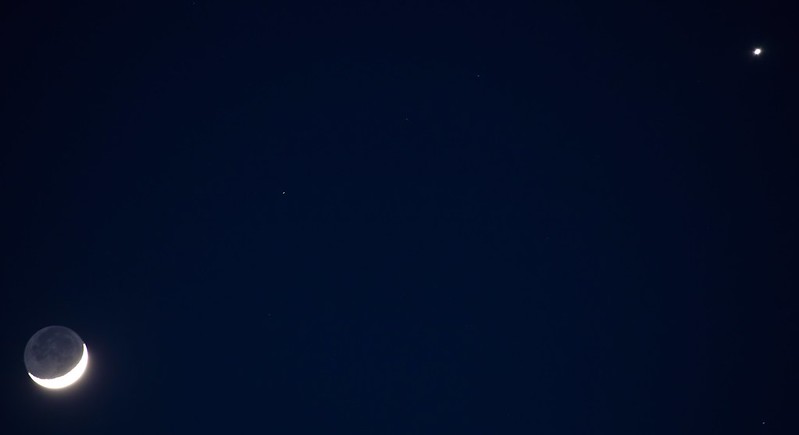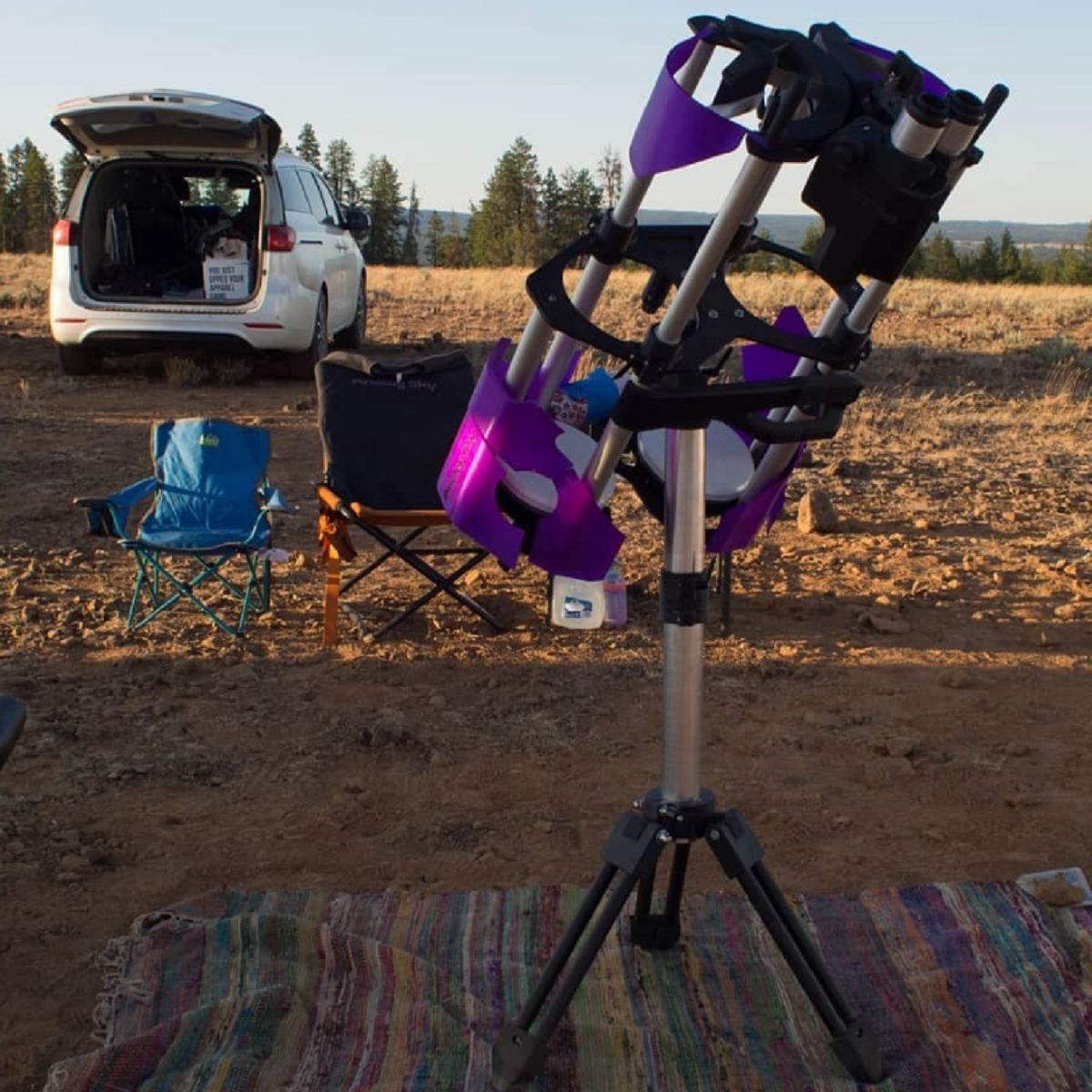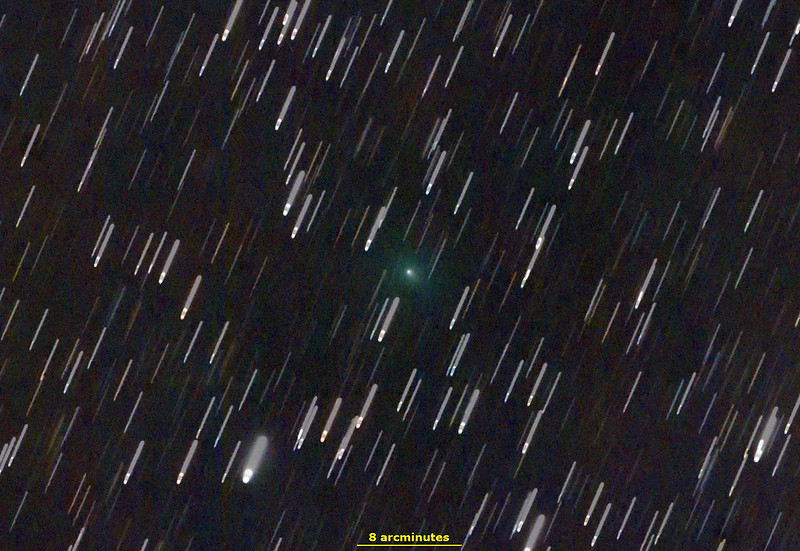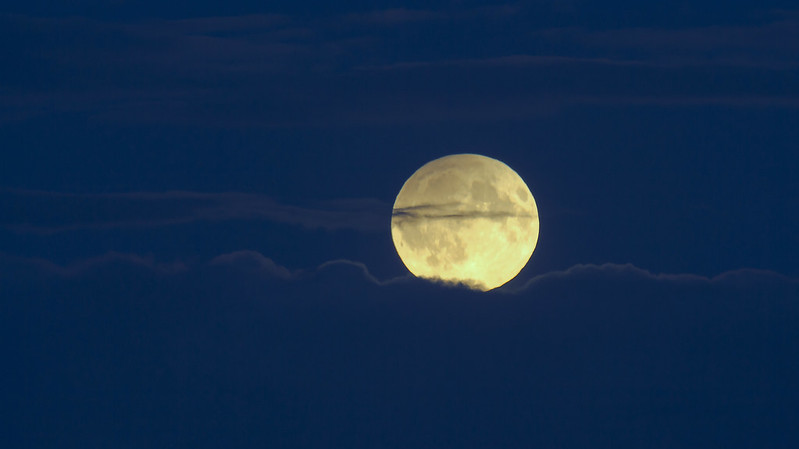Where have all the planets gone in early 2020? While most of the naked eye planets are hiding in the early dawn sky, one world dominates the evening: brilliant Venus.
Continue reading “Following the Inner Worlds: Mercury and Venus in 2020”Introducing Analog Sky’s 3D-Printed Giant Binoculars
Update: we’re happy to announce that Analog Sky is making a special offer just for Universe Today readers for its new giant binoculars.
A unique, crowd-sourced, 3D-printed telescope is poised to revolutionize how we look at the sky.
Late last year, we announced Oregon-based innovator and amateur astronomer Robert Asumendi’s plans to release the Analog Sky telescope system, featuring a set of giant space binoculars. Now, we’re happy to announce that Robert has officially launched the project as a crowd-funded campaign on Indiegogo.
Continue reading “Introducing Analog Sky’s 3D-Printed Giant Binoculars”Comet Y4 Atlas in Outburst: First Good Comet for 2020?
Good news: Though we’ve been going through a cometary dry spell as of late, we may have our first good naked eye comet for 2020: Comet C/2019 Y4 ATLAS.
Continue reading “Comet Y4 Atlas in Outburst: First Good Comet for 2020?”Catch Comet T2 PanSTARRS This Spring
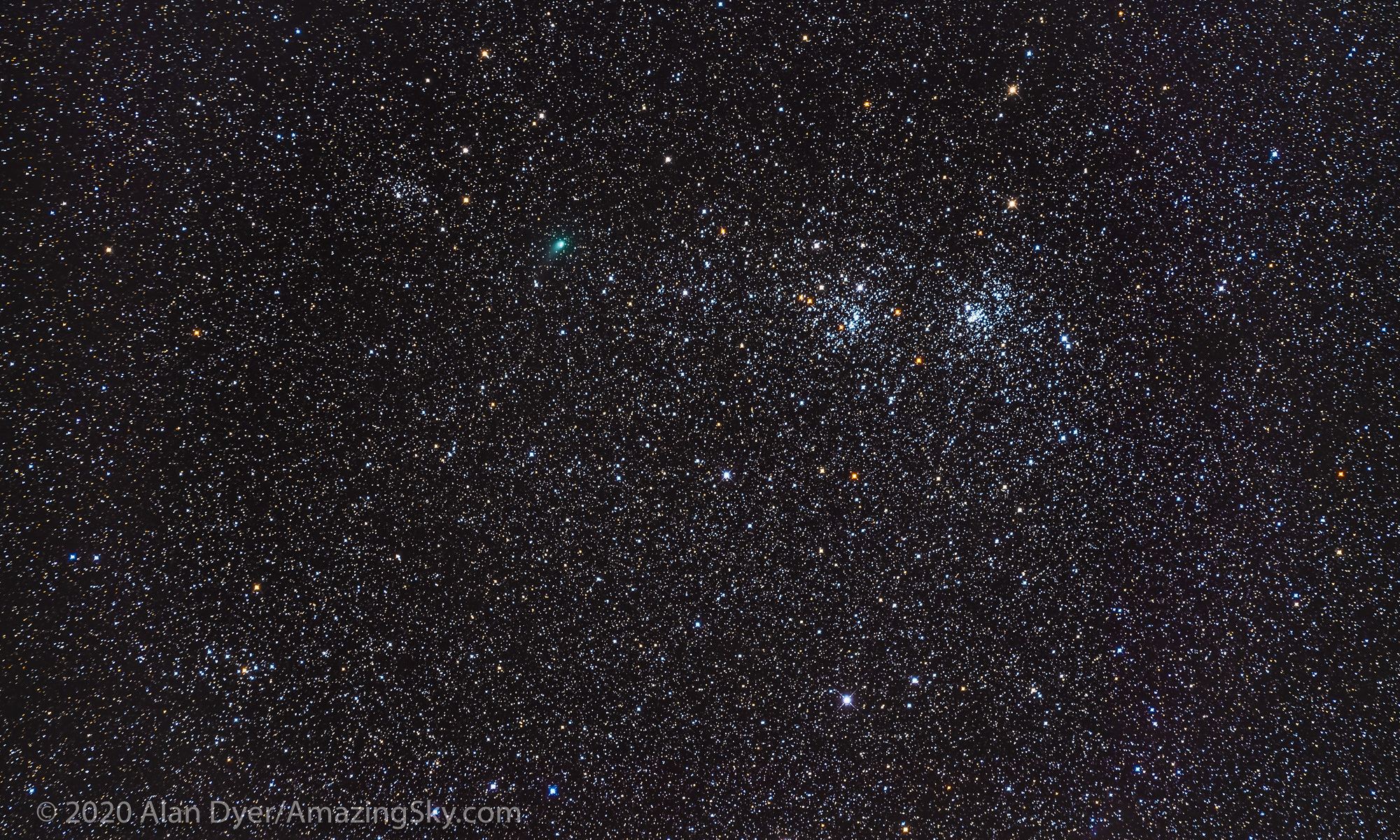
Ready for the next great comet? First, the bad news. there is not (as of yet), a good naked eye comet in the cards, for 2020. The good news is… there is a fine binocular comet currently well-placed for northern hemisphere viewers: Comet T2 PanSTARRS.
Continue reading “Catch Comet T2 PanSTARRS This Spring”Our Guide to this Friday’s Penumbral Lunar Eclipse
Ready for the very first lunar eclipse of the year? The first eclipse season of 2020 comes to an end Friday, with a penumbral lunar eclipse. This season overlaps with 2019, when it kicked off with the Boxing Day annular solar eclipse of December 26th, 2019.
Continue reading “Our Guide to this Friday’s Penumbral Lunar Eclipse”Top Astronomical Events for 2020
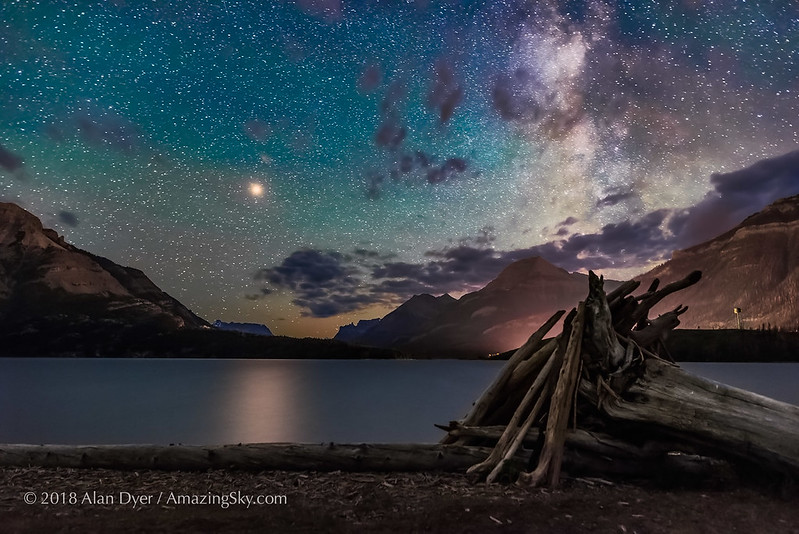
Ready for another amazing year of sky watching and astronomy in 2020? Hard to believe, were already a fifth of the way into the 21st century. 2020 rounds out the final year of the second decade, promising an amazing year of skywatching to come.
Continue reading “Top Astronomical Events for 2020”Waiting for Betelgeuse: What’s Up with the Tempestuous Star?

Have you noticed that Orion the Hunter—one of the most iconic and familiar of the wintertime constellations—is looking a little… different as of late? The culprit is its upper shoulder star Alpha Orionis, aka Betelgeuse, which is looking markedly faint, the faintest it has been for the 21st century.
Continue reading “Waiting for Betelgeuse: What’s Up with the Tempestuous Star?”Our Guide to the December 26th Annular ‘Ring of Fire’ Eclipse
Ready for the final ‘Ring of Fire’ solar eclipse of 2019? The final eclipse of the year kicks off this week on Wednesday, early on December 26th the day after Christmas, with an annular solar eclipse spanning the Indian Ocean region from the Middle East to the western Pacific.
Continue reading “Our Guide to the December 26th Annular ‘Ring of Fire’ Eclipse”Will Blanpain Perform? Comet Prospects for 2020
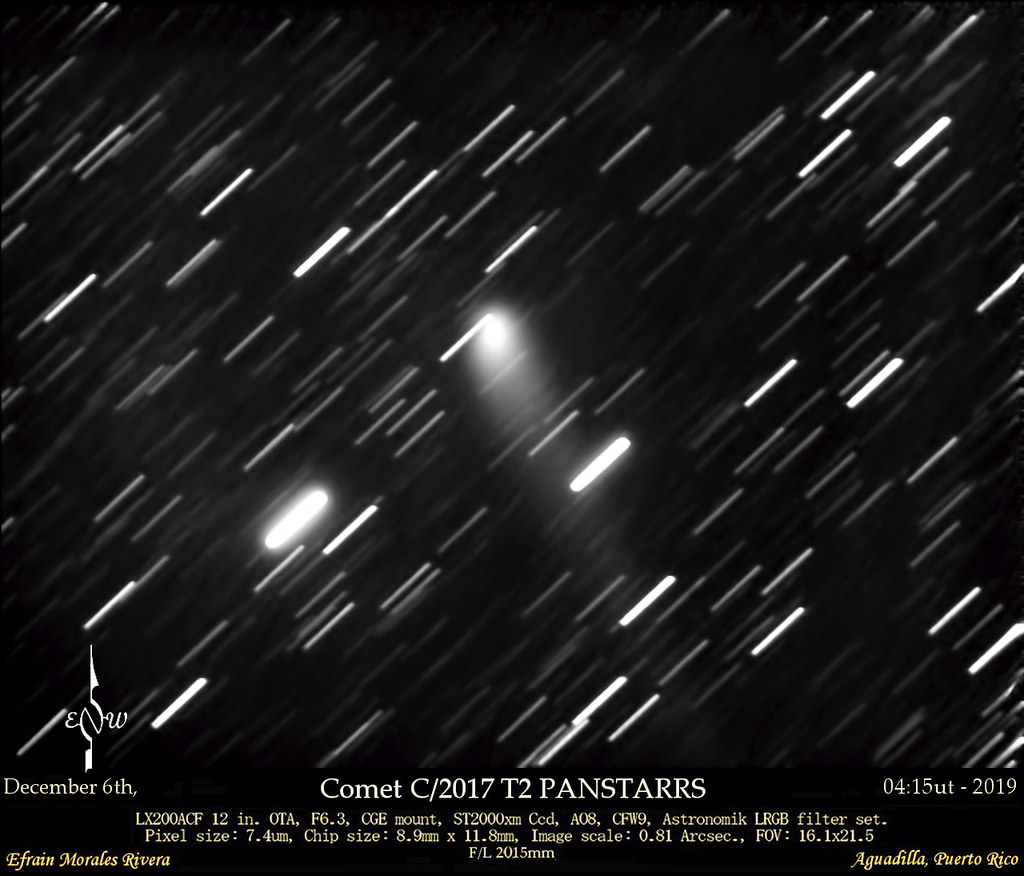
Looking forward to the next bright comet in 2020 or beyond? You’re not alone. Though we’ve had a steady string of decent binocular comets over the past few years, we haven’t had a good naked eye comet since W3 Lovejoy beat solar death during its blistering perihelion passage in 2011. But this survivor turned out to be bashful, and headed for southern hemisphere skies… Comet P1 McNaught followed suit in 2007, hiding from northern hemisphere observers at its best. And we all remember what happened to Comet S1 ISON—touted as the next great ‘Comet of the Century’ on U.S. Thanksgiving Day 2013. Here it is almost 2020, and you have to go allll the way back nearly a quarter of a century to Hale-Bopp and Hyakutake to remember just how brilliant a good naked eye comet can be.
Continue reading “Will Blanpain Perform? Comet Prospects for 2020”December Meteor Squalls: Prospects for the 2019 Geminids and Ursids
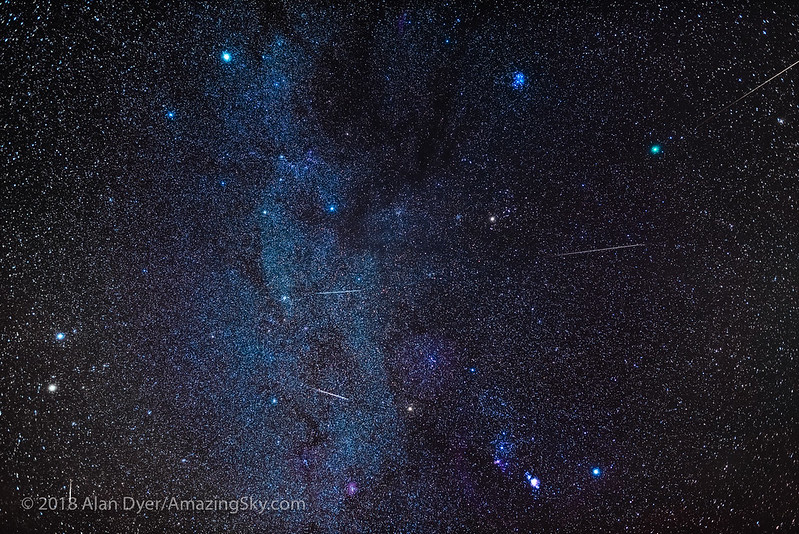
December means chillier climes for northern hemisphere residents, a time to huddle inside near the campfire, both real and cyber. I’ve always thought this was a shame, as the cold crisp nights of winter also offer up sharp, clear skies. Over the past decade or so, December gives observers another reason to brave the cold: the Geminids.
Continue reading “December Meteor Squalls: Prospects for the 2019 Geminids and Ursids”
